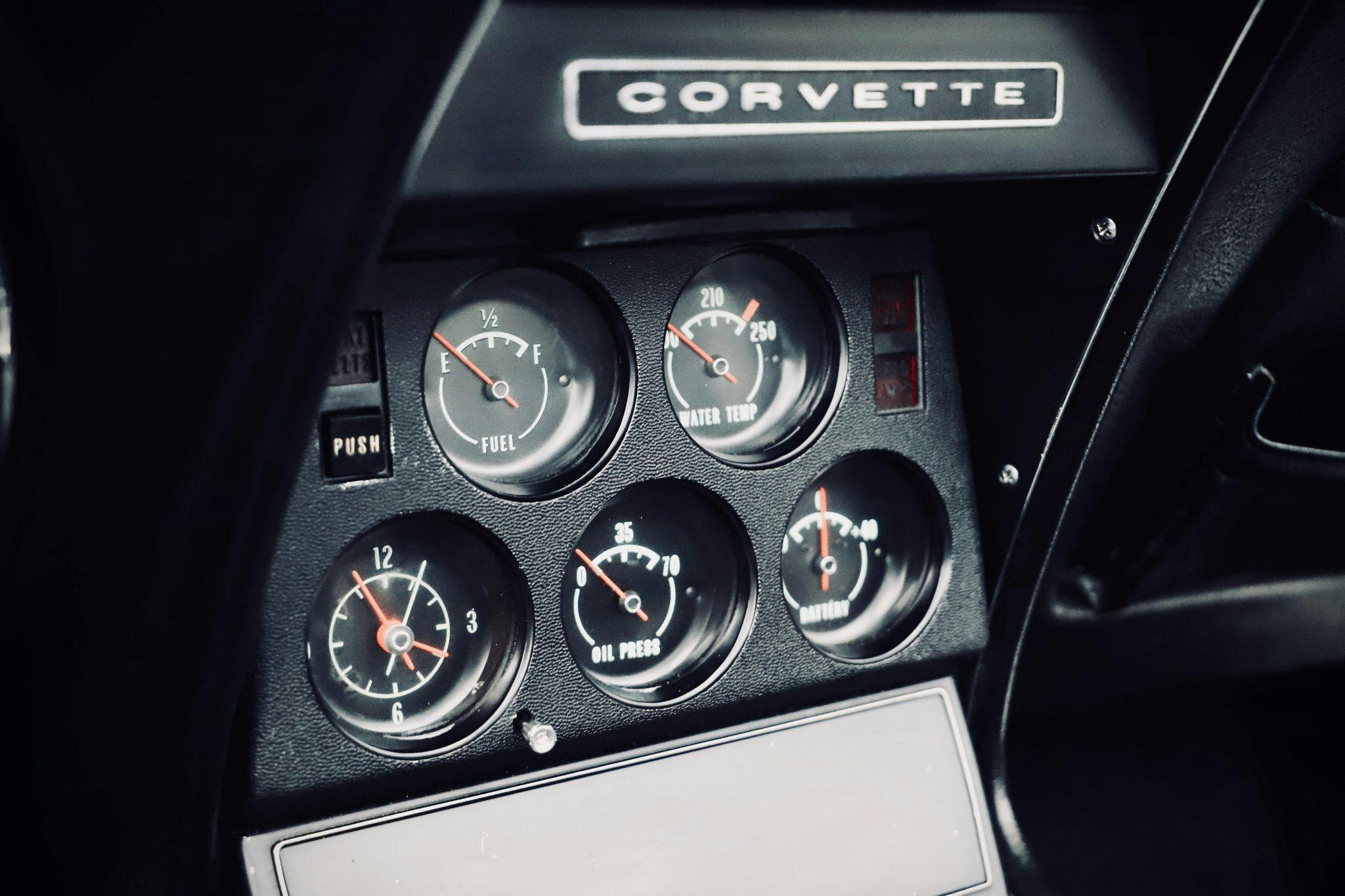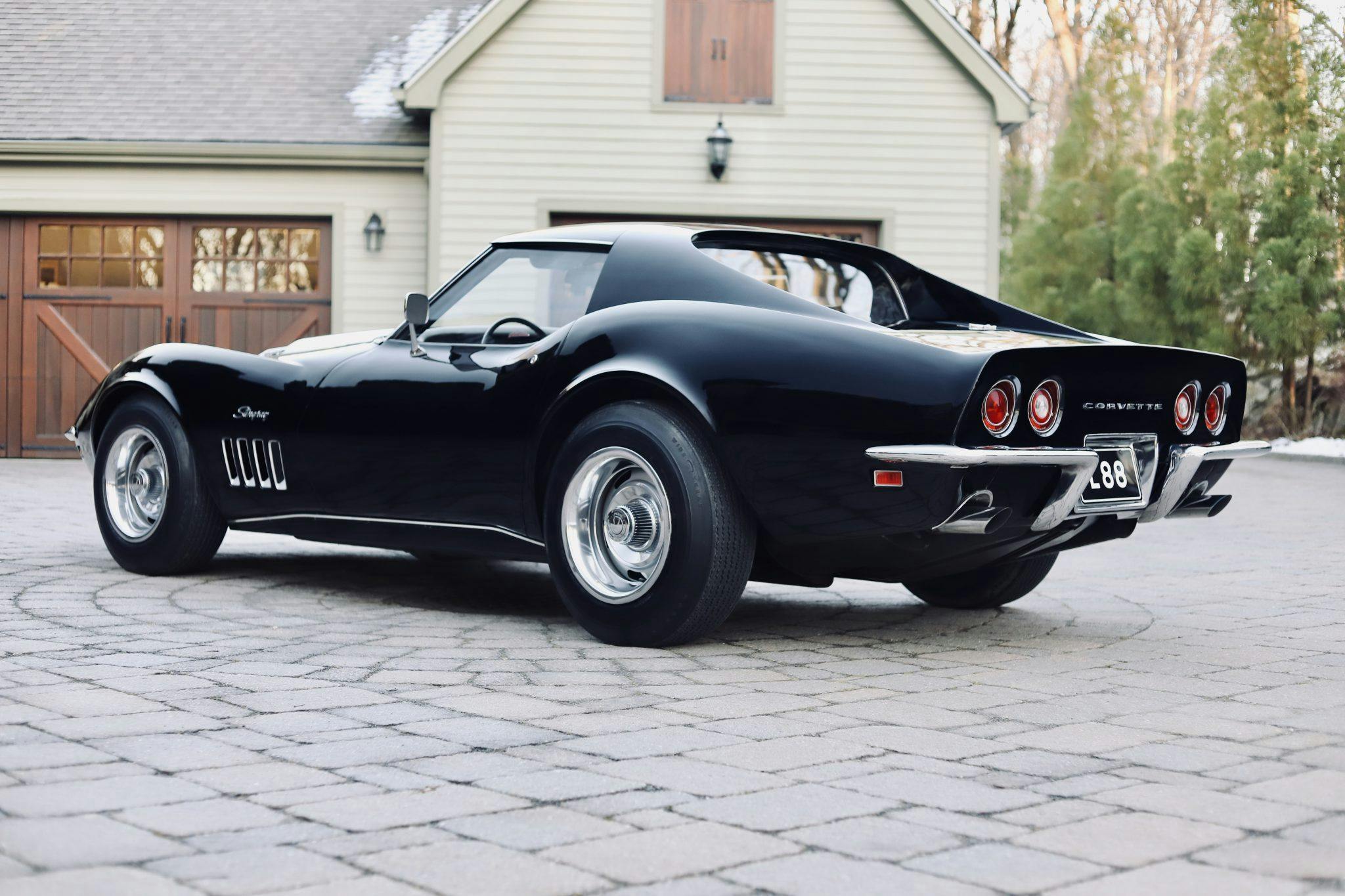Media | Articles
This ’69 may be the nicest L88 C3 Corvette ever
This Stingray is pristine, decorated, and an absolute monster of a vehicle. Need we mention that this Tuxedo Black Corvette boasts one of only 116 L88s produced in the engine’s last year, 1969? That towering hood is a dead giveaway to Corvette faithful. This impressive example on Bring a Trailer is set to give a temperature reading on the L88 market.
Whether they hail from the C2 or C3 generations, L88 Vettes merit their place near the top of the Corvette hierarchy. “All L88s are six-figure cars,” says Hagerty auction specialist Greg Ingold.

The L88 descended from the Mark IV 396 big-block, and debuted in 1966 with 427 cubic inches of displacement thanks to an increased bore (compared to its 396 predecessor). Though Chevy put the big-block into service across its lineup, its performance reputation began with the L72, an upgraded version of the 396 with a four-bolt main block, forged aluminum pistons with forged steel rods, a solid-lifter cam, and a forged steel crank. Initially rated at 450hp, the L72 was soon advertised as a 425hp engine, although nothing changed mechanically.
The L88 turned up the heat—though Chevrolet played coy with the horsepower ratings. Engineers added a race-ready cam and aluminum heads that pushed compression into the stratospheric 12.0:1 range and mandated 103 research octane and 95 motor octane (or higher) fuel. Using the standard R+M/2 formula, that’s what we’d normally call 99 octane, not something you’d find at most pumps. The raucous big-block breathed through a four-barrel 4150 Holley. Chevy said that the L88 made 430 hp at 5200 rpm. Yeah, right. They just failed to mention that the horsepower curve wasn’t done climbing at that point.

This summer, Hemmings dug up a 427 whose owner had begun a home-brewed L88 conversion. Its staff decided the job needed finishing—and a proper dyno test. The final numbers registered 574 hp at 5900 rpm. The engine isn’t an exact L88 replica, as they ditched the solid lifter cam, but with the same pistons, heads, and intake, it’s not far off at all.
Marketplace
Buy and sell classics with confidence
Essentially, each L88 was an interior-stripping and a rollcage installation away from the track. Chevy intended the car for privateer race efforts, and the order form bears out the story: Before you could spec the $1032.15 L88 engine, you had to order the appropriate brake, suspension, and differential upgrades: heavy-duty discs (J50, plus J56 for the matching calipers), beefed-up suspension (F41), and a Positraction rear. Today’s car wears a 4.11:1 ratio, but you could a spec 3.36:1. Hot Rod‘s ’69 L88 test car had the latter, which was marketed by Chevy as a “performance” unit. “Evidently Zora Arkus-Duntov isn’t writing spec books,” the magazine grumbled. It reported that its Turbo Hydra-Matic-equipped tester ran mid-13-second quarter-miles at 111 mph … finishing in second gear. “It absolutely must have a lower ratio.” Power steering, radio, and air conditioning weren’t even optional.
After concluding its road test of the ’69 L88 in April of that year, Hot Rod wrote: “The L-88, even in showroom form, is closer to being a racer than a cruiser, and it would seem almost sacrilegious to see an L-88 ‘Vette serving duty as a transportation machine only.”

“In today’s terms, this is like buying the 1969 version of a C8.R,” says Ingold.
This 1969 L88 coupe is a prime example: numbers-matching, both engine and transmission, and the winner of two Bloomington Gold Certifications and MCACN Concours Gold and Triple Diamond Certifications (between 2005 and 2016).

As of this writing, bidding sits at $352,328, with 8 days to go. What could this L88 bring? Though our data helps us understand this particular car’s desirability, it’s no crystal ball. We’ll be watching this car closely, however, because it may serve as a barometer for others of its kind.
We noted back in April, when a Yenko-campaigned ’68 L88 came to market, that the L88 market has been relatively weak over the last few years.
“Bidder expectations and seller expectations at auction have been completely different things on L88s the past couple years,” says Ingold, “but this one is at no reserve, which should give us a true reading of where the market stands.”
Like this article? Check out Hagerty Insider, our website devoted to tracking trends in the collector vehicle market.














































